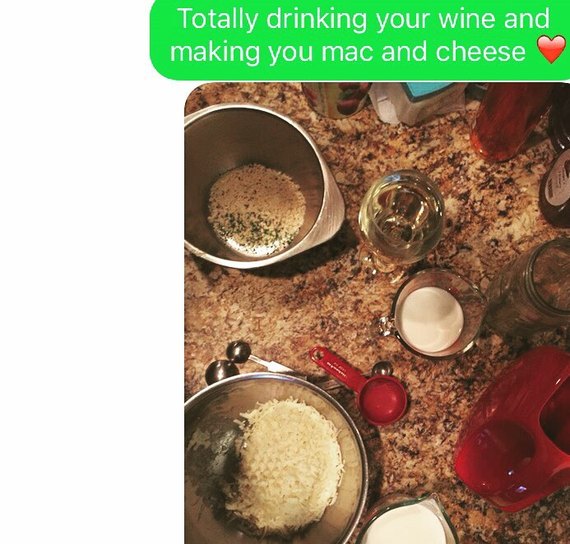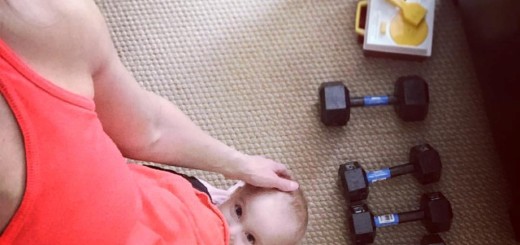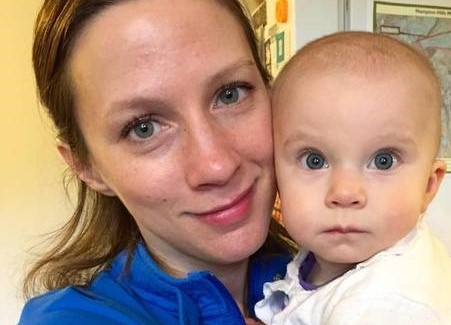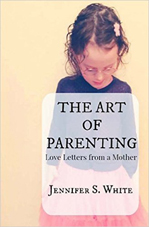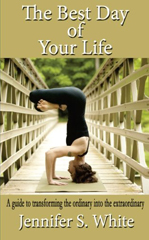A Mom’s Response to What Is “Healthy Food?”
Recently I was asked by a friend on Facebook if I have a healthy mac and cheese recipe, after I shared this following picture and caption:
“They’re not all nastygrams, as we call my bitchy texts when my husband is working a lot. Today is one of those #relationshipgoals days when I’m trying to show my love in the ways I’m able to right now. Like making his favorite mac and cheese. Even if I am drinking his wine.”
My response to my friend on social media was genuine, not snarky—which I hope came across, but words without vocal inflections don’t always translate well. It was that, no, I really don’t. Unless you count that I made this food with love, and as few processed ingredients as possible.
I’m not a dietitian. I’m not a food expert either. I’m a mom. I’m also a realistic mom that saw many of my pre-kid food dreams fall to the floor with Goldfish crumbs, after having children in real life.
To be fair, I am firm about the food in our household in some ways. For instance, I don’t own a microwave. Well, I do, because it’s attached to the house we live in, but I taped a sign inside that says, “Don’t even think about it”—with so much tape that it would be faster for my husband to make his eggs on the stove.
I was also eating disordered for a decent chunk of my life. It took me years and years to get back in touch with my body—with my hunger cues, with my needs, and, most importantly, with letting food make me feel good.
Food tastes good for a reason—it’s meant to be enjoyed, savored and shared with the people we love. (Just like I showed love to my husband by having his favorite mac and cheese in the oven when he got home from a long work day.)
This all said, my daughters are growing, thriving little people that need nourishment, and, almost as significant as this, is the reality that I want to do everything I can to ensure they grow to love food and their bodies—and to respect and nurture both.
My response to my friend was simple: to me, “healthy mac and cheese” means that I grate my own cheese, and that I try my best to buy organic dairy products, like butter. I’ll admit that I bought these macaroni noodles at Sam’s.
Most importantly to me, this particular recipe is the same one that I grew up eating, and there’s authentic comfort in this for me to be able to cook, share and eat it myself—I’m passing along a tradition of love to them, along with hopefully some protein and calcium.
But “healthy” sometimes means cutting myself slack, too.
It means buying a pizza from Earth Fare for dinner, because making it is out the question if I want to have a stress-free evening—and associating stress with food isn’t something I want to regularly serve up to my kids.
“Healthy,” like many things in life, is relative, and not finite. People from all over the world eat differently, and we’re often lucky to be able to try cuisine from different places, or to have eclectic familial backgrounds that gift us with different comfort foods. (Without even getting into the topics of privilege or money.)
I let my kids eat fruit snacks, and those little bunny-shaped chocolate crackers for their snacks sometimes. I occasionally sprinkle a few chocolate chips on top of their organic, whole-milk Greek yogurt. We also cook a lot in our home, and both my 5-year-old and my 1-year-old love pretending to bake, chop and stir along with cooking shows, or to help me in the kitchen.
Especially as a woman who had the exceedingly difficult task of re-learning how to see food as more than merely medicine that my body needs to function, I want my daughters to know balance.
I want them to eat ice cream at the farm down the street, and I want them to know that we don’t eat it every day, or too much at a time, because it makes us feel bad rather than good. I want them to try a new vegetable, even if they spit it out because they didn’t like it.
I want them to remember how their parents spent much of each night cooking together in our kitchen—talking, laughing, sometimes hollering orders at each other over simmering pots and cutting boards. I want them to understand that our nicked, antique dining table is a safe place to reconnect and hang out, after we spent a lot of our days apart.
Food doesn’t have to be our enemy—it took me probably half of my life to realize this.
Food isn’t “clean” or, conversely, “dirty”—it’s more complex, and special, than that.
Food can be something that brings people together. Food can be fuel for my yoga practice, or my daughter’s gymnastics lesson. Food, these days, is eaten more quickly than I’d prefer, since I’m currently spending most of my time with two demanding eating partners—my glorious, young kids.
My main goal right now—far above being obsessed with idealistically defining or restricting my diet—is to show my kids that I love so much what it feels like to love our bodies, and to love feeding them, too.
It’s showing them through my example that healthy love has nothing to do with fictitious perfection.
